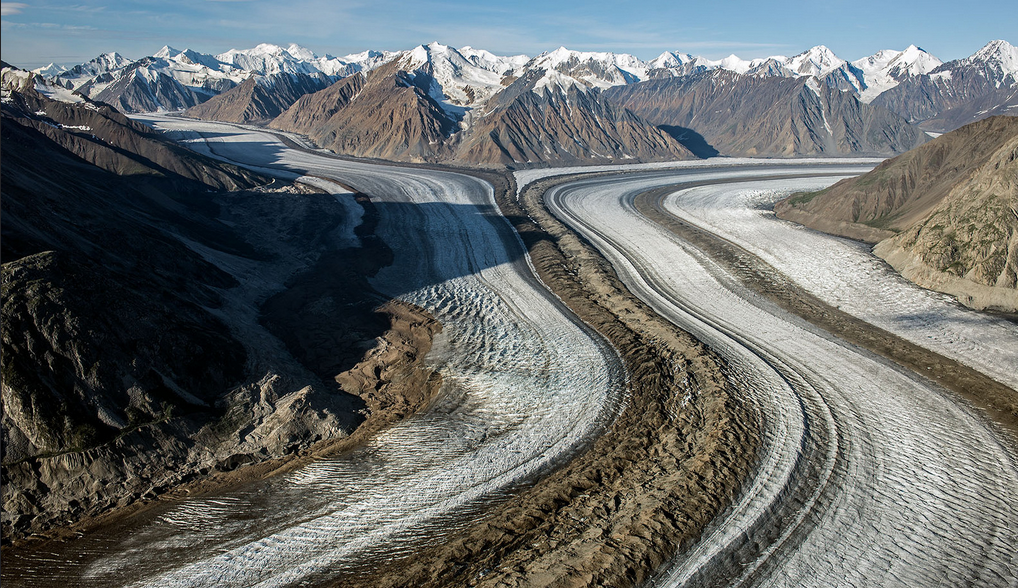
Scientists Warn that Canadian Glacial Melting is “Outside the Scope of Normal”
Canadian scientists are becoming progressively alarmed at the increasing rate of melting of the country’s glaciers, warning that climate change is having a severe impact on the region.
Canadian scientists are becoming progressively alarmed at the increasing rate of melting of the country’s glaciers, warning that climate change is having a severe impact on the region.
Anyone concerned about climate change and sea level rise often thinks about melting glaciers in Antarctica and Greenland. But after these two, Canada has the largest amount of glacial ice: some 200,000 square kilometres.
One of the scientists who is increasingly concerned is Gwenn Flowers, a glaciologist from Simon Fraser University in British Columbia, who has been researching glacial retreat and melting in the Yukon for over a decade.
Her team is currently mapping the ice retreat on the Kaskawulsh glacier in the St. Elias mountain range, which is 70 kilometres long and 5 kilometres wide, with ice some 800 feet deep at some places. Flowers calls glaciers “fantastic barometers of climate change”.
However, Flowers says: “The thinning is really dramatic here” and adds that she believes that the ice is currently melting at about half a metre a year. Indeed from 1977 to 2007, the Kaskawulsh glacier is reported to have lost 17 square kilometres of ice.
Speaking to CBC she says: “We as Canadians are stewards of about a third of the world’s mountain glaciers and ice caps, so this is our responsibility”.
She adds: “As Canadians, given our responsibility to be stewards of this ice, I think we could be doing better. I think Arctic science should be a priority. I think understanding our terrestrial and marine ice should be a national priority.”
Her colleague from Simon Fraser University, David Hik said: “The magnitude of the changes is dramatic. The region is one of the hotspots for warming, which is something we’ve come to realize over the last 15 years.”
Another person concerned about the rapid glacial loss in the region is Diane Wilson, from Parks Canada: “We’re seeing a 20 per cent difference in area coverage of the glaciers in Kluane National Park and Reserve and the rest of the UNESCO World Heritage site [over a 60-year period]. We’ve never seen that. It’s outside the scope of normal.”
This is not the first time the Kaskawulsh glacier has made the news. Research published last year in the journal, Nature Geoscience, outlined what was called “river piracy”, in which one huge river suddenly flows into another. For centuries, the Slims river had flowed north carrying meltwater from the Kaskawulsh glacier towards the Bering sea.
However the unusually hot spring in 2016 caused an intense melting of the glacier that cut a new channel through the ice to the Alsek river, which flows southwards and on to Pacific. Where once the two rivers were comparable in size, the Slims was reduced to a trickle and the Alsek became 60-70 times larger.
At the time, Professor Dan Shugar, the paper’s lead author and a geoscientist at the University of Washington Tacoma said: “We were pretty shocked. We had no idea what was really in store.” He added “Day by day we could see the water level dropping.”
Earlier this year, the Alpine Club of Canada issued its annual State of the Mountains report and warned that “the beheading of Slims River” is likely to be “permanent,” and argued that phenomenon could happen elsewhere as the world’s glaciers retreat.
They noted: “recent history has shown that river reorganization due to climate change can, in some cases, have large consequences for people and ecosystems … As we move toward a world with far fewer glaciers and smaller ice sheets, land that has been covered continuously by ice for many tens of thousands of years will become ice-free.”
As it does so, they contended “many rivers in high mountains will be redirected via more hydrologically expedient paths to the sea. In most instances, the redirection will be inconsequential. In other cases, however, the changes might have more significance.”

